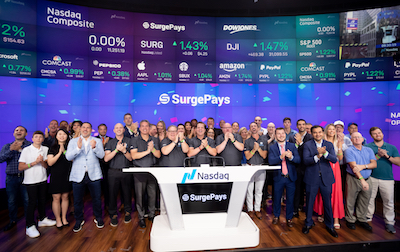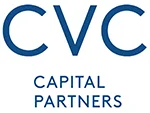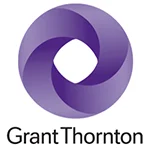For many tech-averse PR practitioners, mention the word “fintech” and you’ll see the instant terror in their eyes. Tech is geeky enough for them, but marry it with financial and some go running to their corporate or consumer safe spaces.
For me, 30-plus years in the profession, it’s been quite the opposite. Pitching, winning and framing campaigns for a new fintech opportunity carries the same excitement and anticipation as during my early career jobs in broadcast journalism.
The term fintech applies to a broad range of financial technologies used to either compete with or improve upon traditional methods in the delivery of financial services. Common examples include mobile money and digital wallets, cross-border remittances, blockchain and cryptocurrencies, crowdfunding, online banking, payment and split payment services, regtech, cloud services, biometric security, trading technologies and more.
The U.S. fintech market stood at $112.5 billion in 2021 with predictions for the global market to reach $332.5 billion by 2028, growing at a compound annual growth rate of just under 20 percent. There are an estimated 10,755 fintech startups in the Americas as of November 2021. Deloitte reports fintech investment decreased to $52.9 billion in the first half of 2022 alone. Whichever data is most relevant, and despite the current short-term economic uncertainty, the numbers point to long-term continuing growth. To PR practitioners, it means continually expanding opportunities.
| This article is featured in O'Dwyer's Aug. Financial PR/IR & Professional Services PR Magazine (view PDF version) |
For those of us drawing most of our income from the tech sector, fintech is really not that much different than other verticals. By and large, we use the same tactics, journalistic sensibilities and business ethics to build market awareness and share of voice.
Once consumer adoption takes hold, fintech is less scary. Think PayPal, Klarna, Quicken, Billpay, Venmo and Zelle as common examples of fintech apps or services that have gone mainstream. But when you hit the b2b market, fintech often creates a new ecosystem and vocabulary. Here are a few quick examples that underscore the excitement and potential of fintechs pushing their markets, and at times, creating new ones.
Financial and telecom services for underbanked and underserved communities
 SurgePays celebrates its recent IPO at Nasdaq Marketsite in New York with CEO Brian Cox. SurgePays celebrates its recent IPO at Nasdaq Marketsite in New York with CEO Brian Cox. |
SurgePays, based in Bartlett, TN, is a tech and telecom company focused on the underbanked and underserved communities. Its blockchain fintech platform is installed in approximately 8,000 convenience stores and bodegas to offer financial and pre-paid products—converting cash to digital, prepaid top-ups and transportation payment cards—to consumers that many see as the last digital frontier. These transactions enable neighborhood stores to become tech-hubs while helping to transform store clerks into de facto fintech experts.
Recently, the company rolled out the capability for its merchants to offer Bitcoin and other digital currencies to consumers, who use this service as a cost-effective means of sending cash back “home” to their native countries. Between these services and its active participation in the federal government’s Emergency Broadband Program and Affordable Connectivity Program, SurgePays’ business and marketplace opportunity is growing rapidly underscored by its 2021 IPO on the Nasdaq. It’s a fintech and telecom company to keep your eye on.
Digital wallet technology for education and government users
Digital wallets may be old hat for some consumers, but take the same technology and move it into industries that are slow to adapt and they become transformative. A prime example is Miami-based ClassWallet, which went all-in on innovation to address the inefficiencies of moving monies within school districts and classroom environments. The company rolled out a platform technology allowing teachers to purchase authorized classroom supplies and technology without having to go through a long and cumbersome centralized district ordering protocol and an even lengthier reimbursement process. More and more districts—as well as many state government departments—moved to its technology.
But the big breakthrough happened when the pandemic hit and teachers were forced to set up temporary classrooms at home. They needed supplies and technologies almost overnight with limited mechanisms to acquire them. Broad market adoption soared. Then, when the prior and current federal administrations started pumping billions in grants to states, districts, families and students to help them purchase technology, supplies and specialized services to combat learning loss, state governments and districts hit a brick wall—many had little or no way to efficiently track, report and distribute those funds.
ClassWallet pivoted and began offering more services, based on its digital wallet technology, which could be used to support government grants, scholarship programs and funding for non-public schools and special ed students. ClassWallet’s digital wallet platform is also more secure, efficient and transparent than existing procurement systems in use by most schools and government agencies.
In its 2021 fiscal year, the privately held company reported a 700 percent increase in business and triple-digit increases in transaction volume and revenue. It’s on track to surpass that in 2022. ClassWallet is quickly becoming an industry standard and is now used in 27 states and by 19 state agencies, across 6,200 schools serving 4.1 million students.
A crypto custody solution to encourage mass adoption
It may feel like “wintertime” for those who’ve purchased Bitcoin or other digital currencies, but for visionary companies such as start-up Vaultavo, it’s the perfect time to address one of the critical roadblocks to crypto’s mainstream expansion—the vulnerability of online trading, transacting and protection of digital assets.
In 2021, criminal hackers stole some $3.2 billion in cryptocurrency, six times more than in 2020 and including six hacks of at least $100 million. Digital assets are complex and difficult to manage. These conditions have created a growing global demand for secure and effortless custody alternatives to store and use digital assets.
Our team has been working with Vaultavo to position its solution to these problems, support its fundraising efforts and prepare for a marketplace launch in the second half of this year. To do that, we’re engaging with analysts, starting conversations with key journalists and influencers and securing speaking platforms at major crypto and fintech industry events. If digital currencies will survive and flourish in the future, it will be due to fintech trailblazers like Vaultavo which are creating breakthrough solutions to highly complex industry challenges.
It’s companies like ClassWallet, SurgePays and Vaultavo that bring the potential of fintech and related technologies to marketplace reality and make working in this fast-moving market so exciting to PR practitioners. Can’t wait to see what’s next on the horizon and how it will help all of us in our business and at-home lives.
***
Henry Feintuch is President of Feintuch Communications.


 Teneo is handling the initial public offering of CVC Capital Partners, one of Europe’s largest private equity firms with nearly $200B in assets under management.
Teneo is handling the initial public offering of CVC Capital Partners, one of Europe’s largest private equity firms with nearly $200B in assets under management. Brunswick Group represents Endeavor Group Holdings as it agrees to go private via its acquisition by Silver Lake technology investment firm, which is handled by Edelman Smithfield.
Brunswick Group represents Endeavor Group Holdings as it agrees to go private via its acquisition by Silver Lake technology investment firm, which is handled by Edelman Smithfield. Tod Donhauser, a nine-year veteran of Edelman, has joined H/Advisors Abernathy as managing director and head of its San Francisco office.
Tod Donhauser, a nine-year veteran of Edelman, has joined H/Advisors Abernathy as managing director and head of its San Francisco office. Intelligent Group Ltd, a Hong Kong-based financial PR firm, has priced its initial public offering of 1.9M shares at $4, which is the low end of the $4 to $5 range.
Intelligent Group Ltd, a Hong Kong-based financial PR firm, has priced its initial public offering of 1.9M shares at $4, which is the low end of the $4 to $5 range. Kekst CNC represents Grant Thornton as it sells a majority stake in its US arm to New Mountain Capital, which relies on Goldin Solutions, in what is billed as the largest PE investment in the accounting and advisory sector.
Kekst CNC represents Grant Thornton as it sells a majority stake in its US arm to New Mountain Capital, which relies on Goldin Solutions, in what is billed as the largest PE investment in the accounting and advisory sector.


 Have a comment? Send it to
Have a comment? Send it to 
No comments have been submitted for this story yet.